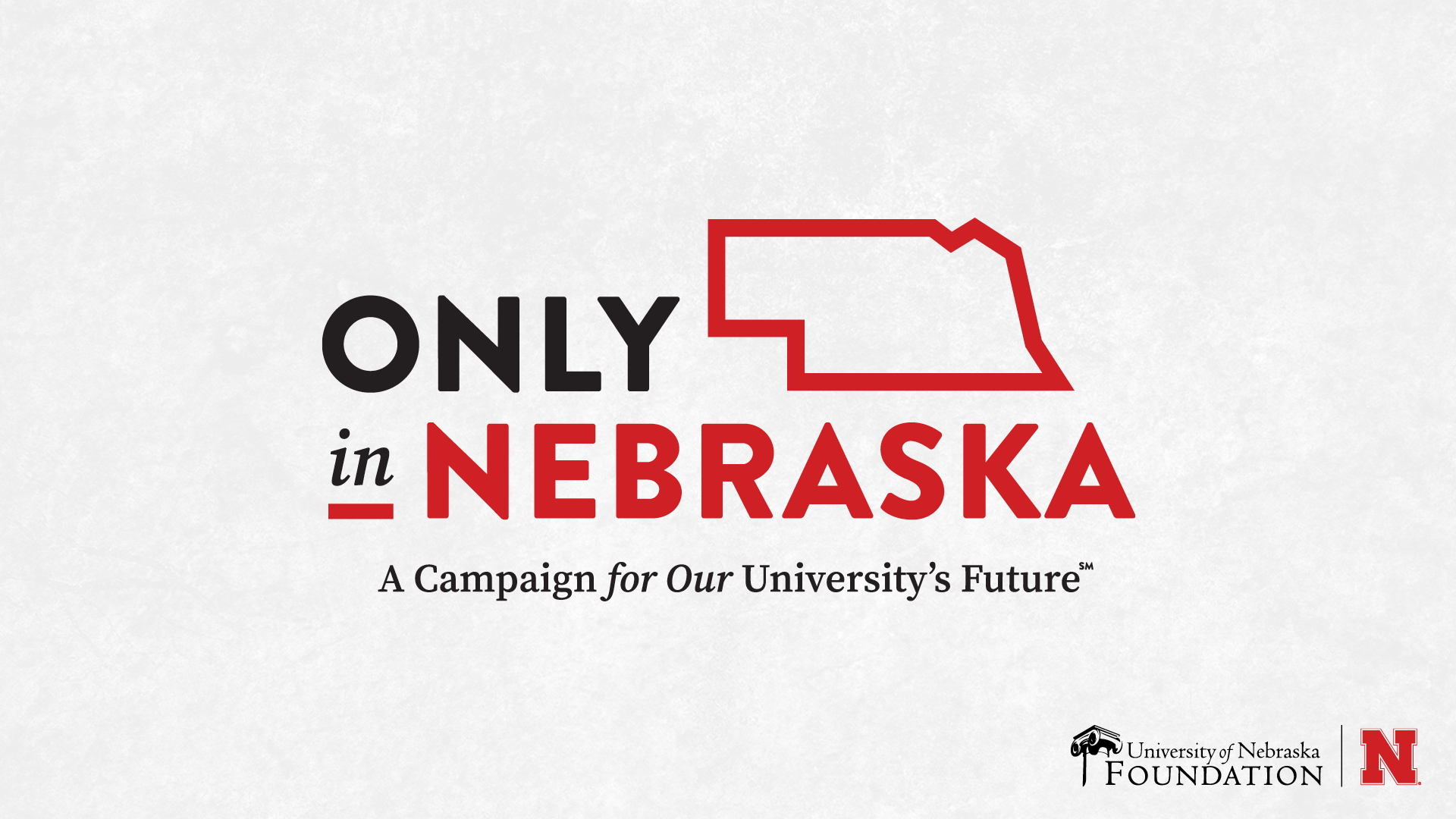
On Nov. 18, University of Nebraska System President Ted Carter, joined by the chancellors of the four University of Nebraska campuses, announced the public launch of “Only in Nebraska: A Campaign for Our University’s Future.” The campaign is a historic effort to encourage at least 150,000 benefactors to give $3 billion to support University of Nebraska students, faculty, academic programs and research to address the needs of the state.
“As Nebraska’s only public university, we have a special opportunity and responsibility to meet the needs of students, our state and the workforce,” Carter said. “The University of Nebraska is one of the state’s most powerful drivers of economic growth and quality of life. With this campaign, we can extend our impact even further — today, tomorrow and for generations to come.
“Our university is extraordinarily fortunate to be generously supported by alumni, friends and all Nebraskans. This campaign is an investment in students and in our future. We are excited to build that future together — as only Nebraskans can.”
While the campaign has three priorities, the top priority is students. The campaign will create additional scholarships to help make education affordable, attract more students and keep them in Nebraska. It also will invest in programs such as learning communities which help retain students, provide mentorship and guidance and ensure their timely degree completion.
The three campaign priorities are:
• Relentless focus on student access and success ($1.6 billion) – The campaign goal is to create scholarships for every college within the university system to expand access and help the university compete for top talent. The campaign also will raise support for first-generation students, community college transfer students and for areas of critical need, such as in health care, engineering, information technology and teacher education; funds to create or expand programs that help retain students, such as learning communities; and funds for modern facilities that offer students contemporary, hands-on learning opportunities.
• Enhancing faculty, academic and clinical excellence ($750 million) – The campaign seeks funds for endowed chairs and professorships to recruit and retain faculty who are a source of intellectual capital for the state as well as the inspiration and teachers of the next generation of students. It will seek support for faculty programs, many of which spin off innovations for commercialization and create new business startups.
• Transformational research and innovation ($650 million) – The campaign seeks funds to support research and innovation that bring solutions and discoveries to the state and improve outcomes for Nebraskans. This includes health issues where Nebraskans have higher incident rates than the national average; support for agriculture; and support for areas where there is existing university expertise, such as in business, entrepreneurship, food and water security, STEM and early childhood education.
Carter said that while the campaign goal is $3 billion, many gifts are pledged over a number of years or are planned gifts coming to the university later. The private funds that are raised in the campaign can complement but not replace state funds for basic operations. More than 99% of all gifts to the University of Nebraska Foundation are restricted by donors to a specific use.
The campaign will support all campuses of the university, which include the University of Nebraska at Kearney, the University of Nebraska‒Lincoln, the University of Nebraska Medical Center and its clinical partner, Nebraska Medicine, the University of Nebraska at Omaha and the Nebraska College of Technical Agriculture in Curtis.
More than half the campaign goal — $1.6 billion — has already been given or pledged toward the campaign from more than 112,000 benefactors. The campaign began in a quiet phase in 2018 and was made public Nov. 18.
Examples of campaign priorities for UNL’s campus include:
• Scholarships and other student support; endowed faculty professorships and chairs; investments in the College of Engineering to address the state’s severe shortage of engineers and computer scientists by completing Kiewit Hall and creating a dedicated home for the School of Computing; creation of a world-class arts educational experience by expanding the Lied Center for Performing Arts to include a new studio theater, enhanced guest entrance and renovated guest facilities; support for athletic facilities and student-athlete support through the GO BIG Training and Student Support Facility, which includes a new locker room, strength complex, athletic medicine area, equipment room, meeting spaces, academic and life skills center and more for all student-athletes.
“The choices we make today — like those made by our predecessors in the previous 15 decades — will impact generations to come,” said Chancellor Ronnie D. Green. “Our vision is to be a transformative, world-leading, 21st-century mission-integrated, land-grant university without walls. Just as we stand on the shoulders of those who came before, they will stand on ours. It is an awesome responsibility and opportunity.”
More information about “Only in Nebraska: A Campaign for Our University’s Future” is at https://OnlyinNebraska.org.